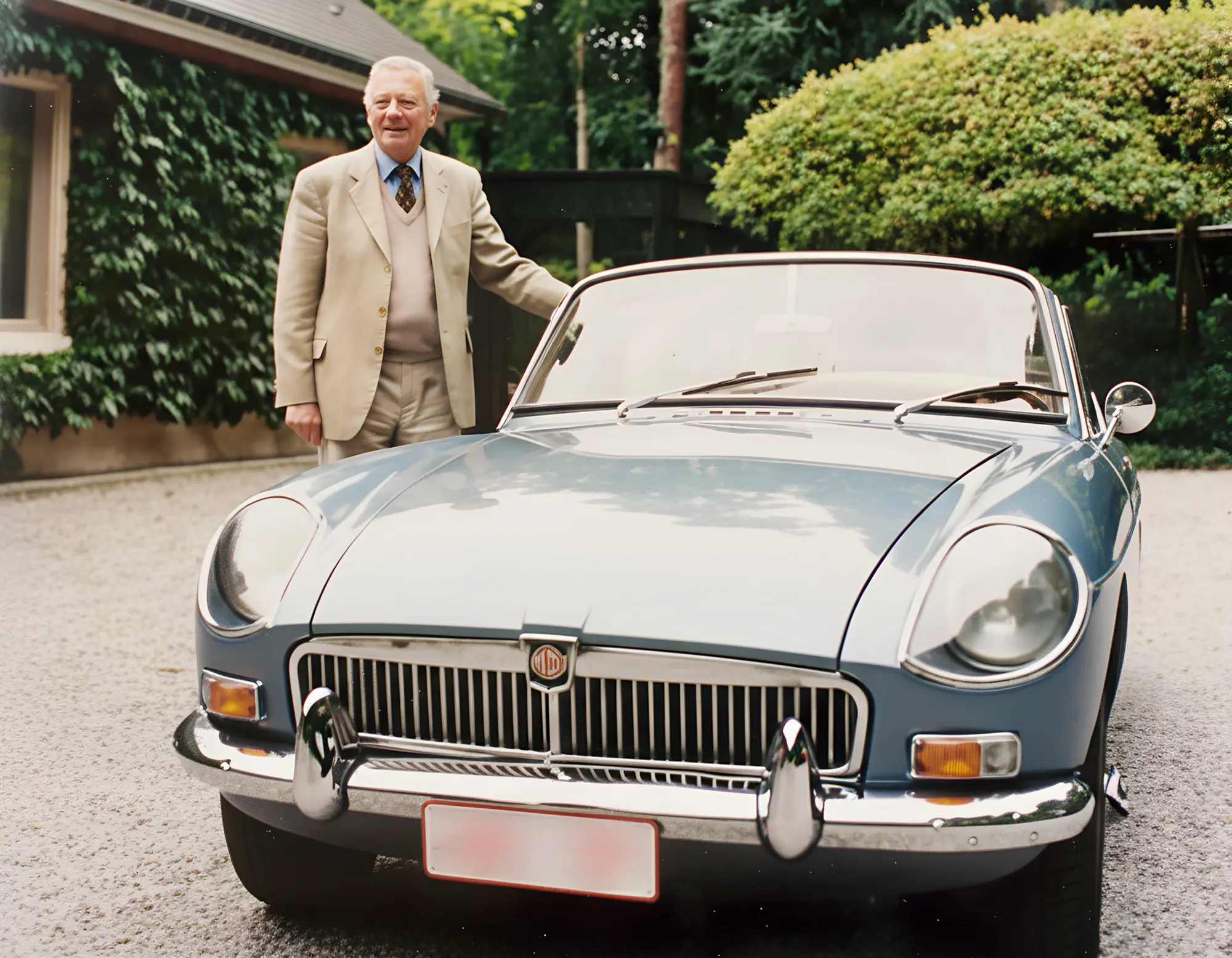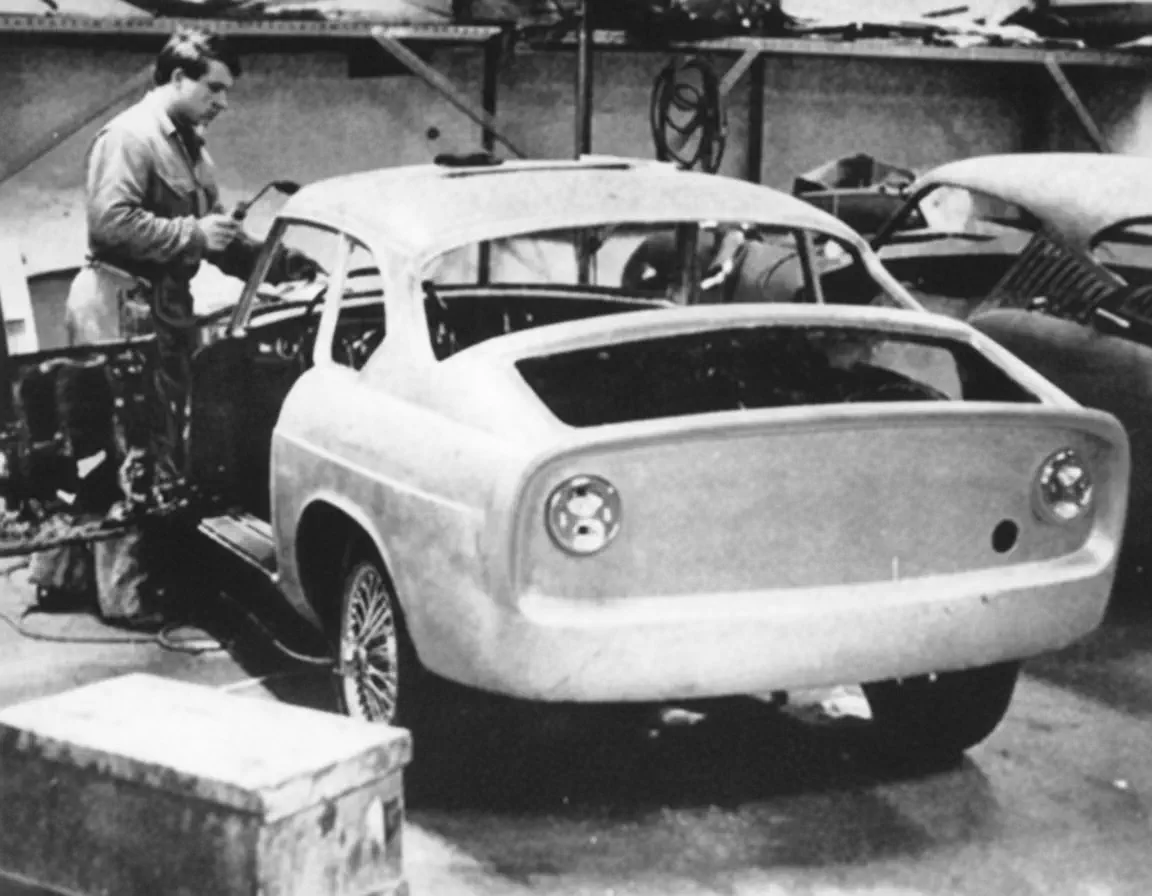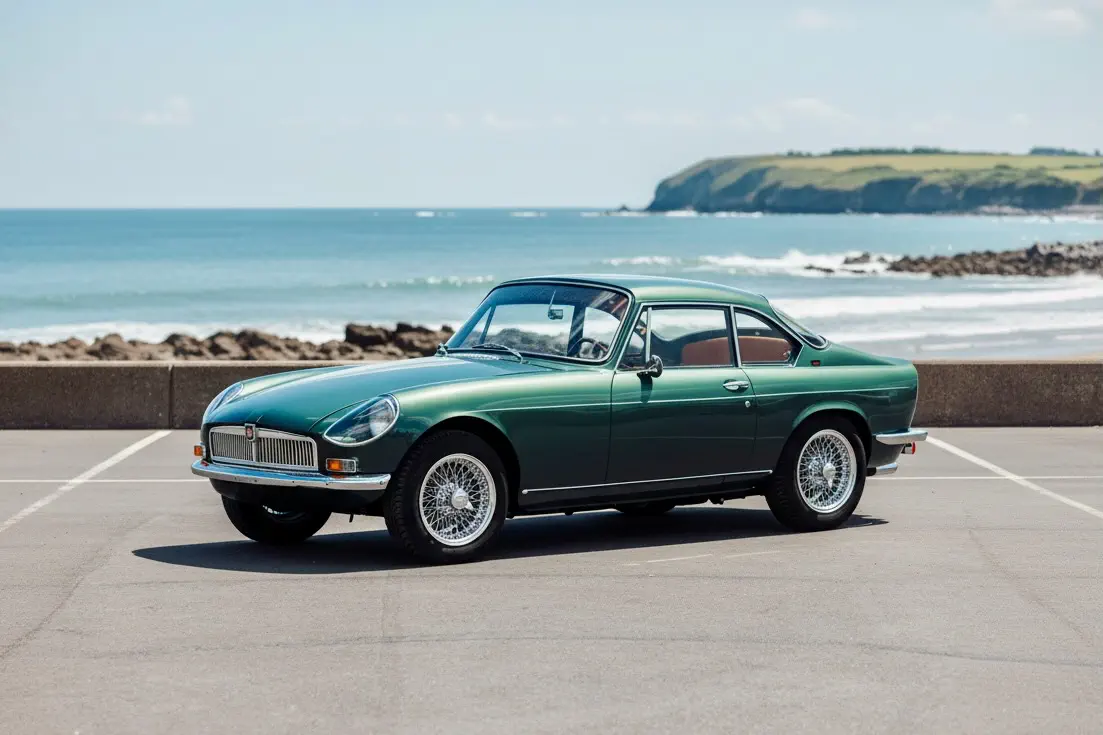The Belgian Who Built a Better MGB

The British motor industry has a long and distinguished history of creating lovely sports cars, and an even longer, more distinguished history of rejecting perfectly good ideas for reasons that make sense only after a fifth whisky at the club. The story of the MGB GT seems straightforward: a handsome, practical coupe from the factory that became part of the national furniture. Yet that version was actually the second attempt. The first came from a Belgian racing driver who built the car MG needed, only to discover that being right counts for nothing when you've got the wrong passport.
The Gentleman from Brussels
Jacques Coune was the sort of man who made the British motoring establishment nervous. He was Belgian, for a start. Born in 1924, he belonged to that peculiar breed of post-war European enthusiasts who thought cars should be both beautiful and functional, a philosophy that would have seemed dangerously radical at Longbridge, where they'd only just accepted that indicators were more than a passing fad.
A former army officer and gentleman driver for Ecurie Francorchamps, Coune also helped found Belgium's national racing team and improve their Formula 1 car. His Brussels workshop on Avenue de la Couronne serviced Ferraris and Jaguars for the sort of clients who considered Monte Carlo "rather common these days." As the first official Abarth dealer outside Italy, he understood the Italian gift for making sensible cars behave improperly.
A Vision in Aluminium
When the MGB roadster appeared in 1962, Coune noticed a shortcoming: not everyone wanted their motoring served with a side of hypothermia. While MG was frantically building roadsters for Californians who didn’t know rain existed, Coune assembled a team of Italian craftsmen in Brussels to create the inevitable closed version.
His 1964 Brussels Motor Show car arrived 20 months before MG's own attempt. This wasn't some aftermarket hardtop bolted onto a roadster. Coune's team hand-formed aluminium panels that saved 90 pounds while creating something that looked as if it had escaped from Modena rather than emerged from the Morris Garages.
The technical sophistication went beyond pretty metalwork. Standard MGB headlights hid behind Perspex covers that improved aerodynamics by eight percent, a trick Coune borrowed from endurance racing where such details mattered. The windscreen sat at 45 degrees rather than the roadster's drowsy 52, creating headroom without the ungainly bump that would later afflict the factory GT. Even the door handles came from Lancia, flush-mounted units that wouldn't have occurred to MG's designers.
The Racing Edge
Every modification reflected competition experience rather than styling whimsy. The aluminium construction shifted the weight distribution rearward by two percent, which addressed the MGB’s tendency to understeer into a hedge. The Perspex headlight covers incorporated air outlets at their base, which created low-pressure zones that helped remove heat from the engine bay. It was the sort of detail learned in competition, not in a studio.
Inside some cars, Restall racing seats provided genuine support. Connolly leather covered surfaces that would normally be trimmed in vinyl, while the rear shelf offered 7.5 cubic feet of storage, accessed from inside the cabin. This was the only practical compromise compared with the factory GT’s hatchback.
The exhaust was a bespoke twin-pipe system that liberated five extra horsepower. It also produced what contemporary reviewers called “a cultured snarl,” which, in 1960s motoring journalism, meant it didn’t sound agricultural. Koni dampers and competition bushings transformed the suspension from MG’s traditional setup into one that communicated road conditions clearly to the driver.
The Longbridge Verdict
When Coune presented his Berlinette to British Motor Corporation executives, the reception was polite but predictable. Sir Alec Issigonis, Syd Enever, and chairman George Harriman examined the car at Longbridge, took it for test drives, and concluded it looked "too Italian".
The timing was curious, given that BMC was already negotiating with Pininfarina on its own coupe design, a project that would eventually cost £50,000 (about £1.3 million today) in consultancy fees. The difference, perhaps, was that Pininfarina was a commissioned partner, while Coune had simply arrived with a finished car that nobody had asked him to build.
The rejection reflected how British manufacturers preferred to operate in the 1960s. External ideas were welcome, provided they came through proper channels with appropriate contracts and consultancy agreements. A Belgian enthusiast presenting an unsolicited solution, however elegant, disrupted the established order. It was rather like receiving unrequested advice at your club: the quality of the suggestion mattered less than the presumption of offering it.
The Arithmetic of Excellence
Without factory backing, Coune’s economics did not add up. Each Berlinette required 400 hours of skilled labour, starting with a new MGB roadster that was stripped and rebuilt with aluminium coachwork to standards that would embarrass luxury manufacturers.
The Berlinette reached 60 mph a second quicker than standard, achieved a top speed of 108 mph compared with 105, and delivered ten percent better fuel economy on touring runs.
However, all this came at a price. At £1,300, nearly double the standard roadster’s £690, it competed with the better-established Lotus Elan Plus 2 and used E-Types.
Production ended after only 56 cars, when Belgium’s late-1960s economic downturn removed the market for costly automotive refinements.
The Survival of Sophistication
Today, perhaps fifteen Berlinettes survive from the original fifty-six. One fetched £87,000 at Bonhams in 2019, roughly ten times the value of a solid GT. Another resides in the Louwman Museum, recognised as the MGB that should have been. A Swiss collector owns the third known survivor together with Coune’s original BMC proposal, which included production methods that would have reduced the premium to just £50.
The factory MGB GT sold 125,000 units and became a British institution. Yet those who have driven both report that, where the factory car feels like a roadster wearing a roof, the Berlinette seems to have been conceived as a coupe from the first pencil stroke.
Jacques Coune lived until 2012, spending his final years as a curator at the Brussels Automobile Museum. He kept a single Berlinette photograph on his desk but rarely spoke about the car. His creation remains a perfect example of what happens when someone who knows better meets an industry that knows best: brilliance ignored, mediocrity mass-produced, and somewhere in a Swiss garage, proof that the wrong answer was there all along, built in aluminium and speaking with a Belgian accent the British could not bear to hear.




